ThieAudio Oracle MKIII Review - A Perplexing Prophecy
The Oracle lineup is one of ThieAudio's most popular lines, and it now has a new face in the form of the Oracle MKIII. What's changed in the latest iteration of the Oracle?
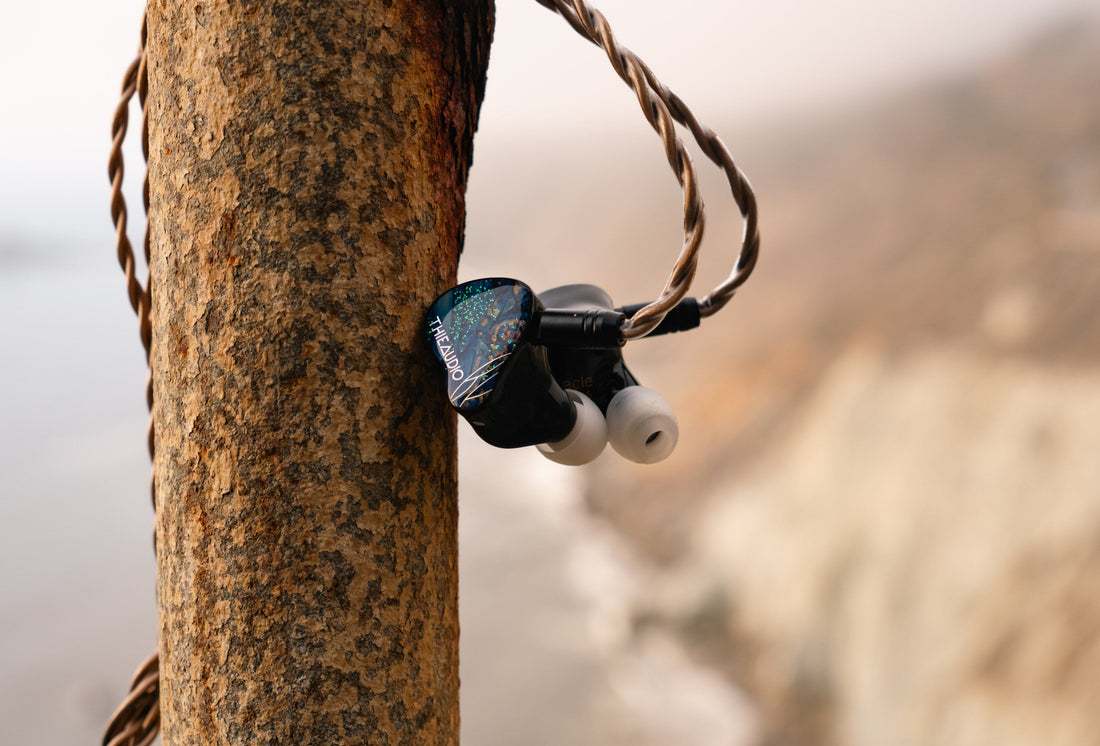
Introduction
I’ve had mixed feelings about ThieAudio’s Oracle lineup in the past. The original Oracle - basically a mini Clairvoyance (the overshadowed brother to the popular Monarch) - was a decent IEM, albeit one that I felt was too safe. But if I felt that the Oracle was too safe, its replacement the Oracle MKII was just the opposite: an aggressive, strident listen that wouldn’t appeal to many listeners.
You can see that there’s some family drama in the ThieAudio lineup…and now there’s even more in the form of the Oracle MKIII. The Oracle MKIII adds in a second dynamic driver (for a 2DD/2BA/2EST configuration) while maintaining the $589 USD price tag. Let’s take a closer listen at how it stacks up.
This unit was provided for review by Headphones.com. It will be returned at the end of the review period. As always, what follows are my honest thoughts and opinions to the best of my ability.
Thieaudio Oracle MKIII In-Ear Headphones
What we like
- Good sense of detail and sense of instrument separation
- An interesting take on more colored sound
What we don’t like
- Highs are somewhat unnatural sounding and sound incoherent
- Bass could have more impact/resolution
Source & Drivability
All critical listening was done off of my iPhone 15 Pro with the Apple dongle, a Questyle M15, and lossless files from Apple Music. The stock cable and silicone tips were used. I had no issue hitting my usual listening volume of ~70dB with either source. If you would like to learn more about my listening methodology, then I would encourage you to check out this page.
In-the-Box
- IPX cable w/ 3.5mm termination
- Cleaning tool, clip, and 3.5 to 6.5mm conversion
- Silicone and foam tips
- Zippered soft-carry case
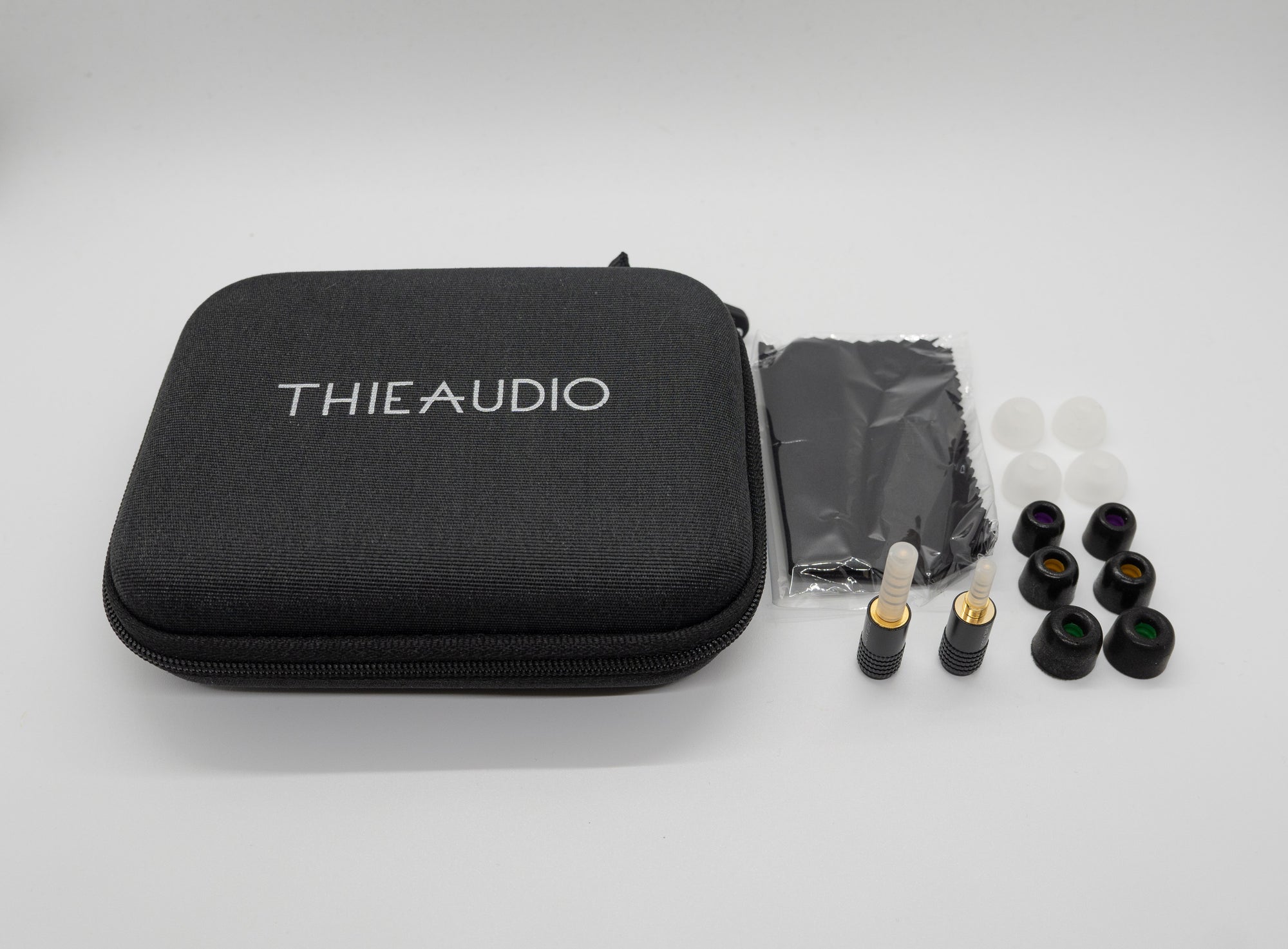
The medium-sized soft-zipper case makes a familiar appearance; it’s a decent case; however, you won’t be pocketing it very easily. Inside there is a mesh slot to hold some additional accessories, and a loop to secure the IEM itself.
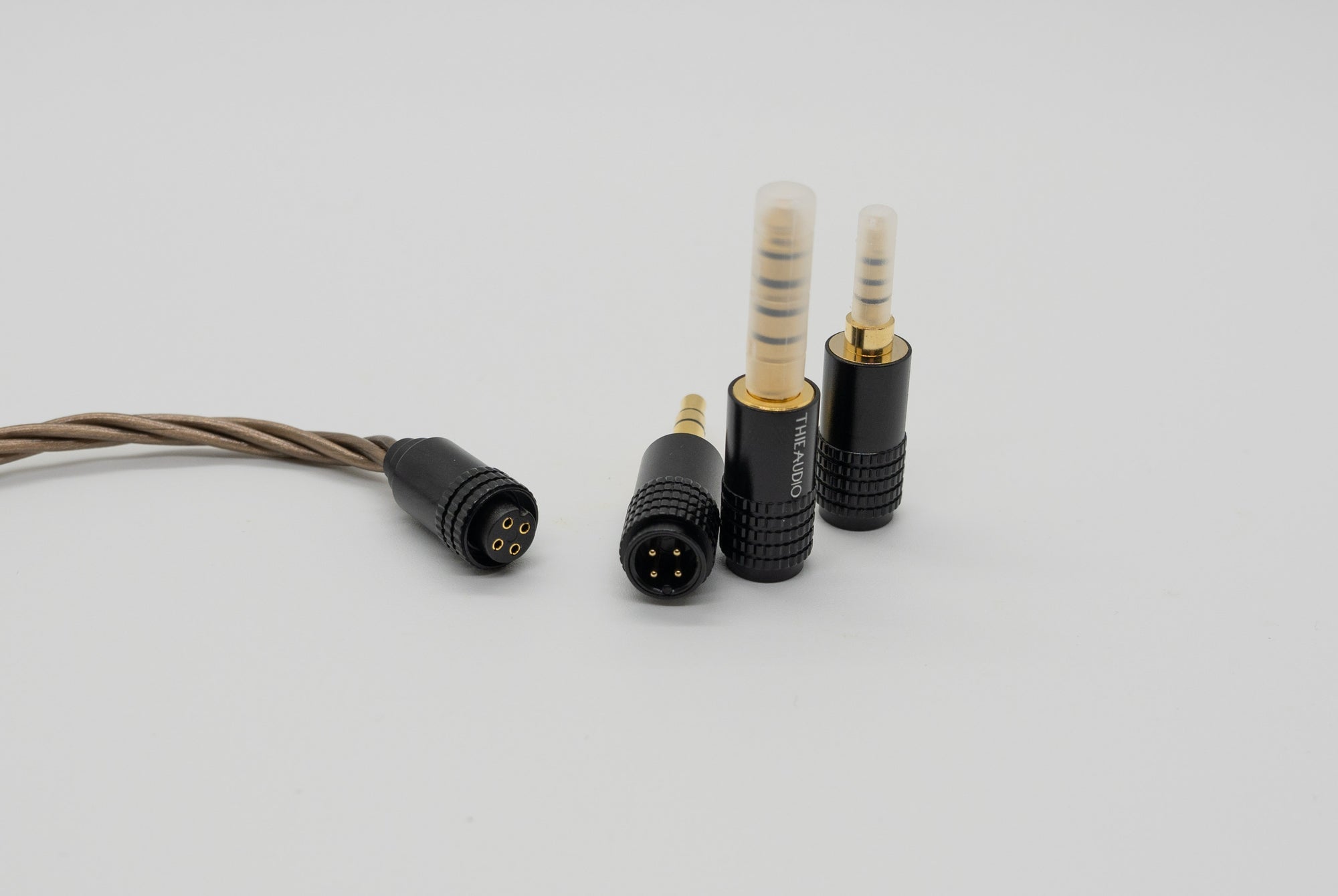
The Oracle MKIII seems to use the same 2-pin cable as the Oracle MKII. It’s fairly pliable, a bit on the thicker side, and has a slightly rubber-y texture to it. It’s not my favorite cable but the inclusion of swappable terminations (for 2.5/4.4mm) is certainly appreciated.
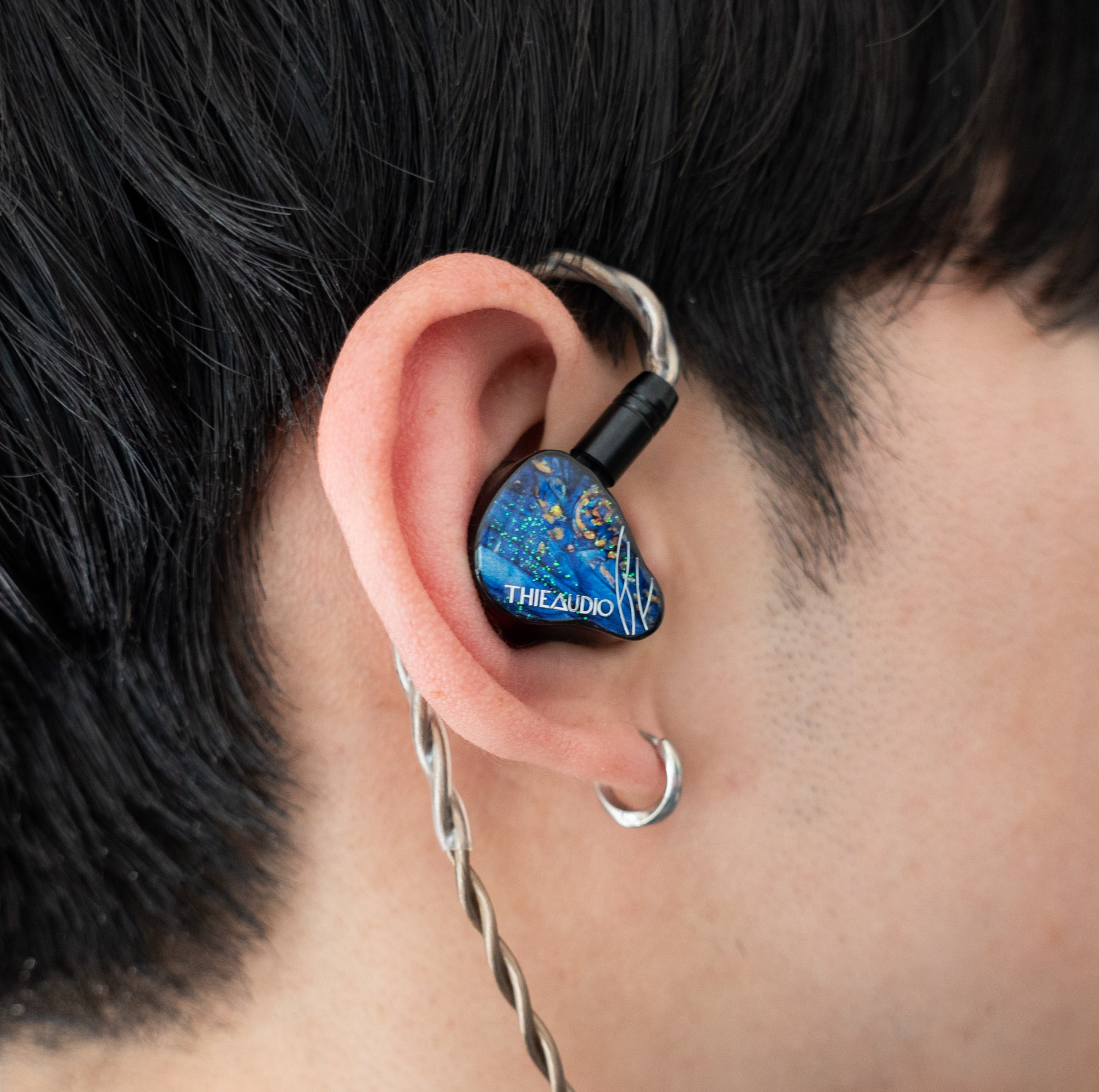
Moving to the Oracle MKIII itself, it follows a similar formula to past ThieAudio releases: a black resin shell adorned with a more colorful faceplate. The gap between where the two meet is pretty much seamless, and I find the faceplate design of the Oracle MKIII to be visually appealing. A new, subtle detail is that the ‘A’ in ThieAudio has been eschewed for a triangle.
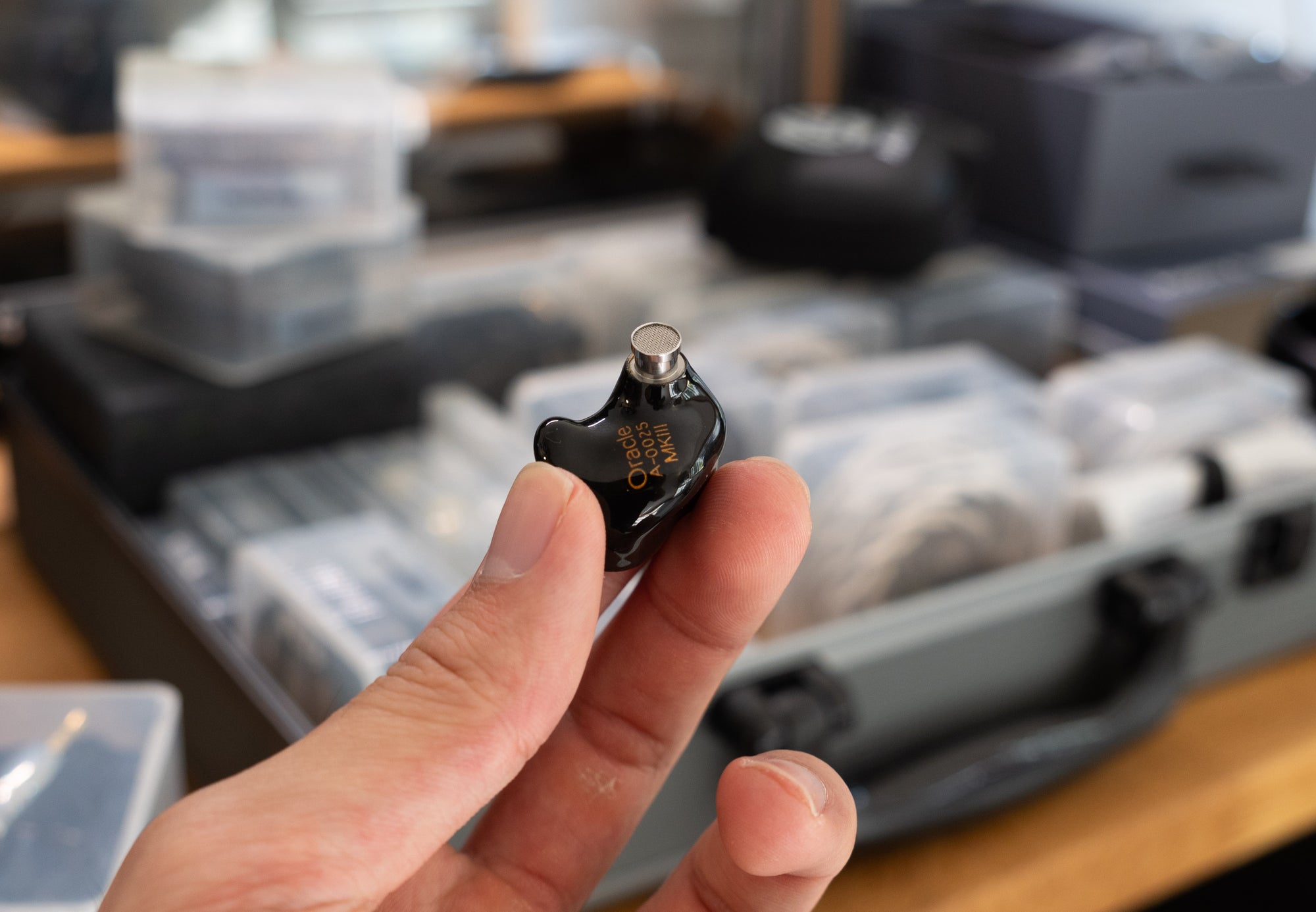
For comfort, I would consider the Oracle MKIII to be a larger IEM - the shells are fairly large and the nozzle is slightly extruded. However, the shell is reasonably ergonomic and I had no trouble listening to the Oracle MKIII for a couple hours. Additionally, there is visible venting at the front of the IEM, so pressure build-up and driver flex (a harmless crinkling of the driver) shouldn’t pose concerns.
Sound Analysis
Above is a graph of the ThieAudio Oracle MKIII measured using the ear canal simulator of the B&K Type 5128 (designated Type 4620). It is calibrated to the 4620 + Human Diffuse Field HRTF. The bounds behind the measurement are the bounds of preference outlined in the existing speaker and headphone literature from Harman.
It’s clear that the ethos of the Oracle series has shifted a lot over the years. The original Oracle was more of a ‘mini’ Clairvoyance (the forgotten, overshadowed brother to the Monarch) that prioritized a smooth listen above all else. The Oracle MKII took a 180 and added back in more bite at the expense of being hard to listen to. And finally, the Oracle MKIII seems to straddle the line between the two: neutral with bass boost, plus some slight colorations.
The bass response of the Oracle MKIII peaks at about 10dB at 20Hz. It’s definitely well-controlled; however, it’s hard to ignore that it sounds slightly ‘soft’ around the edges of transients. In conjunction with a relatively fast decay (the bloom behind notes) in the bass, the result is that it sounds somewhat dampened and like it has a sputter to it.
Moving upwards, the midrange of the Oracle MKIII is mostly good. It has hints of warmth and leans more colored thanks to a pinna notch at 2kHz (as opposed to 3kHz seen on previous iterations of the Oracle). This coloration is further realized through a slight valley at 3-4kHz to avoid sibilance. Vocals, especially those in the upper-midrange, are present while not being too forward. Standalone, I would consider this a pleasant midrange - in fact, one that’s quite close to my preferences - but it’s important to remember that we hear tuning as a collective.
This is where the idea of coherency comes into play. What is coherency? In IEMs, it is common to employ multiple drivers - sometimes of different types - to achieve superior technical performance. More closely, multiple drivers begets more control over the tuning and increased high-frequency performance (extension and energy past 10kHz) which leads to this impression.
However, when different types of drivers are being employed, it is possible that the drivers do not ‘synergize’ well with each other - especially if their implementation is poor. In frequency response measurements, this is usually realized by odd peaks or valleys where the drivers are crossed over with one another. Subjectively, an IEM with poor coherency will sound like you can pick out the individual types of drivers and the parts of the frequency response that the individual drivers are responsible for.
And this is mostly the impression I get when I hear the Oracle MKIII. The best way I can describe the treble is that it is exaggerated and not in a good way. It has a noticeable peak at 6kHz and then a series of small peaks moving up to the upper-treble. These peaks are mostly at the same amplitude which means that the overall treble response is not particularly fatiguing. But their placement triggers some uneasiness and generally sounds pretty artificial (perhaps tinny) to my ears despite the great extension.

That being said, the Oracle MKIII is a decently strong technical performer. There is a strong sense of fullness to the trailing edges of transients due to the excellent treble extension. Staging on the Oracle MKIII is width-focused like most IEMs; additionally, with a decent sense of height to the sides. Separation - the sense of space between notes - is excellent owing, again, to the airy highs and the slightly recessed 3-4kHz region.
For a sense of dynamic contrast, I have the perception that bass notes pop significantly less than those in the treble, with midrange notes falling somewhere in-between. Again, this ties into the idea of coherency. And depending on the track, this can lead to moments where it sounds like the Oracle MKIII has strong micro-contrast. However, overall, it tends to sound fairly flat to my ears and I wouldn’t consider it a particularly strong performer in this department.
The Bottom Line
It’s difficult for me to enjoy the Oracle MKIII. On paper, it does a lot of things right and it does sound good for a short period of time when I listen to it. Then the flaws start sinking in and I struggle to bring myself to keep listening.
The Oracle MKIII illustrates the struggle of straddling the line between a balanced tuning and desirable colorations. It is much easier to hit a good, conventionally neutral tuning than it is a colored one. In my opinion, this is why the Clairvoyance and OG Oracle were safe picks that still enjoyed moderate success. But the more an IEM strays into colored territory, the more it risks alienating listeners and it risks losing the direction of its tuning, which I find to be the case with the Oracle MKIII.
Feel free to start/join the discussion about the Oracle MKIII below on either our forum or on our Discord server where you'll find like-minded enthusiasts. Thanks for reading and supporting the site!

